|
Dans les années 90, il y a eu un boom de films sur la réalité virtuelle : The Lawnmower Man (1992), Ghost in the Machine (1993), Brainscan (1994) et Strange Days (1995), pour ne nommer que ceux-là. Avec Symphonie 5.1, la chorégraphe Isabelle Van Grimde nous replonge dans ce monde en alliant projection et interactivité; grâce à l’abandon des conventions narratives que la danse nous offre, le spectacle est heureusement moins moralisateur que les films ci-haut mentionnés.
La danseuse Marie-Eve Lafontaine est première en scène. La projection frappe le sol, mais un trou noir se dessine sous elle, créant l’illusion qu’elle pourrait s’y enfoncer comme dans du sable mouvant. Autre trompe-l’œil : la projection donne une impression d’épaisseur contre le plancher noir, tel un tapis. Au début, la projection et la musique de Tim Brady et Thom Gossage sont intimement reliées puisque cette dernière consiste en un son continu, comme ce fil qui glisse contre les cordes d’une guitare durant toute la performance d’Umwelt de Maguy Marin. Deux lignes de lumière traversent l’avant-scène. Georges-Nicolas Tremblay se joint à Lafontaine et la ligne semble se déplacer sur leur corps, mais non, c’est leur corps qui fait glisser la lumière alors que leur colonne s’ondule. Ici, il y a symbiose entre projection et mouvement. Toutefois, assez tôt, je me questionne déjà sur la danse dans ce paysage. Honnêtement, je me fous un peu du mouvement des interprètes. Je me demande même pourquoi ils dansent autant. Leur mouvement est souvent rapide, mais à peine visible dans la pénombre. Les corps se dédoublent : d’abord virtuellement, dans des projections qui, contre le noir de la scène, rappellent les films de danse de Norman McLaren (Pas de deux, Ballet Adagio, Narcissus); ensuite, alors que deux jeunes danseurs, Samaël Maurice et Maya Robitaille-Lopez (12 et 14 ans), se joignent à ceux déjà en scène. Il y a même quelque chose de virtuel dans l’immobilité des interprètes se tenant debout derrière les écrans translucides, comme s’ils n’étaient que l’ombre d’eux-mêmes. Puis une tache lumineuse suit Lafontaine, la transformant en proie nocturne sous les yeux d’un gigantesque hibou. Une certitude s’installe : la musique n’est pas assez forte (et je n’aurais pas pu être plus près d’un haut-parleur). Ici, ce n’est pas assez pour elle de se faufiler dans nos oreilles; elle devrait nous enrober comme la projection enveloppe les interprètes. Assis à la dernière rangée, je peux tout de même entendre les danseurs. Pour certains spectacles récemment présentés à l’Usine C, on offrait aux spectateurs des bouchons d’oreilles. On aurait dû faire la même chose ici et mettre le son dans le tapis. Le cerveau est divisé entre l’onirique et le physique, chacun tirant de son côté, de sorte qu’on demeure dans un certain entre-deux, qu’on se ramasse à aller nulle part. Nous restons dans une salle de spectacle à observer une performance où des éléments disparates parviennent rarement à entrer en synchro. On dirait que les interprètes sont en compétition avec la technologie tellement leur mouvement est frénétique, désespéré même, et avec raison : ils sont en train de perdre la partie. Malgré la base interactive de la projection, je me surprends même à penser qu’ils sont parfois carrément de trop. Symphonie 5.1 est à son meilleur lorsque les danseurs animent la projection de leur corps, cet écran mouvant. 27-29 janvier à 20h & 30 janvier à 16h www.agoradanse.com 514.525.1500 Billets : 28$ / Étudiants ou 30 ans et moins : 20$
0 Comments
In 1970, Joann Kealiinohomoku (who just passed away in December) caused somewhat of a stir when she published her seminal essay “An Anthropologist Looks at Ballet as a Form of Ethnic Dance.” Hopefully, that ballet is a form of ethnic dance is now more obvious than it is controversial.
As such, we could say that with her version of Swan Lake, South African choreographer Dada Masilo is making two ethnic dances – ballet and African dance – meet. (There is no such thing as “African dance”, Kealiinohomoku would say, rightfully.) Furthermore, Masilo queers ballet by having Siegfried fall for a male black swan rather than Odette, whom he is set to marry by his parents. As such, her Swan Lake is explicitly about the compulsory heterosexuality that permeates both ballet (countless gay dancers constantly having to act straight, except for that bisexual orgy in Kader Belarbi’s La Bête et la Belle) and life in general. After having a quick run-through of your typical ballet (like Dave St-Pierre running through the whole of La Pornographie des Âmes in the first tableau of the show), a dozen dancers plunge into their own version of Swan Lake; for they do not dance like they did in the summary. Thanks to African dance, the women are more vivacious, shaking their hips and stomping their feet; and, thanks to queering, the men are lighter. When they dance together, their movements are the same, ungendered. Similarly, all dancers sport white tutus. By toying with the conventions of classical dance, Swan Lake plays like a parody of ballet. Despite these subversions, the show otherwise remains quite conventional. All of its politics are in its content and none are in its form. We are inevitably reminded of the poverty of dance as a medium for storytelling. What storytelling and ballet have in common is that they are mere rearrangements of the same elements. Since we already know this story, as we do all stories, we are free to wander off and come back to it without ever having missed anything. As a light nerd, I was also disappointed with Suzette Le Sueur’s permanent blanket lighting provided by twelve equally distant spots at the front of the stage. The ballet ends with a collective suicide (the result of the toxicity of homophobia, I assume), which I presume is meant to be emotional since it is set to Arvo Pärt’s “Spiegel im Spiegel.” There’s no reason to dance to Arvo Pärt. What more could there possibly be to add? What remains is the stellar performance of the dancers of the Dance Factory Johannesburg. January 14-16 at 8pm www.dansedanse.ca 514.842.2112 / 1.866.842.2112 Tickets: 34-63$ It’s not often we get to see intergenerational friendships dealt with such directness and subtlety as in Brooklyn Touring Outfit’s Co. Venture, presented at Centaur Theatre’s Wildside Festival. There is David Vaughan: 91 years old, British, dancer, singer, actor, choreographer, and archivist of the Merce Cunningham Dance Company. And there is Pepper Fajans: 31 years old, American, designer, builder, performer, carpenter, and personal assistant to Merce Cunningham.
Neither of them appears onstage at first. It is rather a large wooden board that slides out from backstage, moving across the floor – part of the set, surely – but that then disappears through another door… before coming back onstage. As it slides away, it reveals Vaughan, sitting on a chair. When the board falls down, we think of the huge wall that comes tumbling down with a powerful gust of wind in Sasha Waltz’s Körper, though that’s not what happens here; the board turns out to be so light it barely makes a sound. Vaughan speaks and we listen. That accent. That deep voice. When Fajans joins him onstage, they begin to reminisce about the past, about how they met working for Cunningham. We can see Fajans’s eyes looking inside his own head, trying to remember his lines (successfully). It’s endearing. It almost looks like he’s trying to remember the actual events. Plus it was the first show of the run; the text is bound to come back to him. Fajans periodically returns to the board. As he handles it, it inevitably shapes his body, flattening it, making it more angular, reminding us of Cunningham’s geometric choreography. Vaughan remains in his seat. “I can’t stand on one leg anymore,” he will later tell us. Co. Venture is also about dis/ability. Fajans sits next to his friend and together they dance with great economy, gently tapping their feet and waving their arms before them. It’s so small, yet there’s an undeniable magic. It’s amazing what can happen when you meet people on their own turf, like choreographer Maïgwenn Desbois does. “Use your body,” Fajans says, as he dances vigorously. That sentence means different things to different people. There is an awkwardness to his own movement, like it’s too big for him; he always seems to be overreaching, jumping just a bit too far. We can see the struggle, the trembling, just as we did when the Cunningham Company last passed through Montreal at Festival TransAmériques in 2010. I’d never made a link between Cunningham and Daniel Léveillé, though now it seems obvious. Fajans rests his arms on a lengthy stick, turning himself into a scarecrow-like cross. Then, it’s large skeletal puppets – flat heads resting on three long pieces of wood pivoting around the screws holding them together – that shape and replicate his body, awkward elongated limbs extending into space. It’s hard to do a show like Co. Venture justice. It’s so simple, yet so charming and touching. Too rarely are dis/ability and intergenerational friendships explored in contemporary North America. After Cunningham had a stroke, he lost control of one of his arms. Still, he kept finding ways to move. “He found more and more ways to do less and less,” says Vaughan. It reconciles one with life and ageing. January 7-16 www.centaurtheatre.com 514.288.3161 Tickets: 16$ / Students or under 30 years old: 13$
Avec Au sein des plus raides vertus, la chorégraphe Catherine Gaudet continue de résister à une représentation simpliste de l’humain, le pendule oscillant entre le divin et le monstrueux. À notre entrée en salle, les quatre interprètes (Dany Desjardins, Francis Ducharme, Caroline Gravel, Annik Hamel) sont déjà sur scène, nous offrant la suggestion de leurs dos nus dans la pénombre. Une musique d’ambiance aux allures de trame sonore ralentie nous plonge dans un monde sous-marin. Les danseurs entament un chant choral.
Desjardins se pogne le paquet. La musique peut être aussi spirituelle que nous voulons, notre corps ne s’évapore pas pour autant. La beauté de leur chant contraste avec la déformation que les visages de Hamel et Ducharme subissent. L’extase crée la laideur. Ducharme s’assoit sur le sol, le bras tendu vers le haut, vers rien, vers la mort, comme s’il était le sujet d’une peinture classique implorant la clémence de Dieu. Les danseurs épousent souvent des poses dramatiques, comme s’ils étaient interrompus dans le mouvement. Les deux femmes se tapent à tour de rôle. La bassesse, la petitesse de l’humain commence à transparaître. Dans ces contrastes, Au sein n’est pas sans rappeler tauberbach d’Alain Platel, qui faisait aussi appel au chant choral. Toutefois, le portrait de l’humain que Gaudet propose nous paraît plus pessimiste. C’est que Platel illustre le côté sombre de l’humanité en situant ses personnages dans un dépotoir. La beauté de leur chant, provenant de l’intérieur, est contrastée avec la laideur de leur environnement. Dans Au sein, c’est l’inverse : la scène épurée consiste en un carré gris entouré de tubes de lumière blanche; c’est de l’intérieur que la noirceur émane. Cette petite scène carrée – nous nous remémorons celle vue une semaine plus tôt pour 4-OR de Manuel Roque – contribue à la dramatisation de l’espace. Les danseurs n’en sortent jamais, de sorte qu’ils demeurent constamment dans le centre de notre champ de vision, demandant toute notre attention. De chaque côté, quatre rideaux entrecoupent la scène, inutiles puisqu’il n’y a aucune entrée ou sortie de scène à dissimuler; ils ne servent qu’à signifier le théâtre. De plus, les spectateurs disparaissent dans le noir, l’éclairage ne tombant que sur les interprètes. Souvent, le regard de ces derniers se tourne vers le public. Chaque spectateur pourrait être convaincu que c’est lui qu’on regarde. « Qu’est-ce que ça te fait quand je fais ça? » Cette question revient, d’abord alors que les danseurs manipulent le corps les uns des autres. Lorsqu’ils continuent de la répéter alors qu’ils ne se touchent même pas, nous nous rendons compte qu’elle s’adresse plutôt aux spectateurs. Nous pourrions parler de l’effet de la danse, mais la question pourrait aussi paraître comme une préoccupation morale; sauf que les interprètes ne semblent pas particulièrement intéressés par notre réponse. « On regarde avec les yeux du cœur, » rappelle Desjardins, comme si cette phrase n’était pas un non-sens, à ses bêtes rampantes qui accablent des spectateurs imaginaires d’insultes sur leur apparence. La relation n’est pas autant entre les interprètes qu’avec le public. Nous pourrions déduire que les quatre danseurs ne représentent en fait les tensions au sein d’un seul et même être. Au sein des plus raides vertus représente pour Gaudet une grande avancée vers la maîtrise de la mise en scène. Nous attendons l’entrée des boxeurs. Nous sommes assis des quatre côtés d’une scène carrée surélevée d’une dizaine de centimètres à peine, un pâturage vert pomme étroit. C’est un à un que les quatre interprètes de 4-OR, nouvelle création du chorégraphe Manuel Roque, foulent la scène : Lucie Vigneault, Indiana Escach, Mark Eden-Towle, Sophie Corriveau, chacun portant des vêtements de sport rivalisant de mauvais goût.
Leur danse se déploie dans une dizaine de positions répétées en canon, comme si la Levée des conflits de Boris Charmatz (FTA, 2013) se frottait au minimalisme de Nicolas Cantin. (Peter James, collaborateur de Cantin, signe d’ailleurs la dramaturgie de 4-OR.) La séquence initiale se reconstruit au gré des interprètes par la suite, conservant parfois le décalage du début, tombant par autres moments dans une synchronisation accidentelle ou voulue. Notre attention délaisse le spectacle pour un instant et, à notre retour quelques secondes plus tard, force est de constater que nous ne retrouvons pas ce que nous avons quitté. Confrontés à l’illusion que nous sommes toujours en train de regarder la même chose, nous sommes toujours en train de rater quelque chose. Les mouvements sont toujours les mêmes mais la chorégraphie n’est jamais pareille. Comme c’était le cas avec Charmatz, nous pensons à Wavelength, le film expérimental pseudo-minimaliste du cinéaste canadien Michael Snow. L’association est d’autant plus appropriée ici : comme trame sonore, Roque nous offre des enregistrements sur le terrain – souffles dans le micro inclus – dont un de vagues. Assistons-nous au spectacle le plus exigeant de Roque? Puis, de nulle part, la musique de la chanteuse d’origine cubaine Celia Cruz, tellement en décalé avec ce que nous regardons que certains spectateurs éclatent de rire. À peine deux semaines plus tôt, les chorégraphes Hanako Hoshimi-Caines et Maria Kefirova utilisaient la même technique pour The Paradise, proposition tout aussi minimaliste. Noir. Un nouvel éclairage offert par une seule ampoule suspendue au-dessus de la scène révèle de la fumée. Contraste avec l’univers précédent. Exit la danse, entre le théâtre. Corriveau, maintenant accoutrée d’un chandail angora rose, joue avec une vache et un dinosaure en plastique. Escach se dandine sous le tapis vert. Eden-Towle apparaît en caleçon et en veston. Portant un collant vert, torse nu, Vigneault applaudit au ralenti avec ses gigantesques gants de Mickey Mouse. De façon surprenante, Escach émerge de sous le tapis, arborant une robe qui reflète la lumière en pépites d’arcs-en-ciel. Dans une danse aguicheuse, son bassin décrit des cercles alors qu’il n’y a rien de séduisant à ce qui se passe autour d’elle. Nous sommes dans un monde d’apparence. La juxtaposition inexplicable d’éléments hétéroclites se manifeste telle une fracture psychique. Le moment qu’il nous séduit avec un brin de magie inattendu, Roque nous plonge dans le noir final. Le vilain. Je l’aime. 3-6 décembre www.tangente.qc.ca 514.871.2224 Billets : 23$ / Étudiants : 19$
The Paradise
November 19-22 www.tangente.qc.ca 514.871.2224 Tickets: 23$ / Students: 19$ About the photographer: Meryem Yildiz was born in Montreal. She is found in translation, writing and photography. www.meryemyildiz.com In September 2015, Montreal choreographer Gérard Reyes presented his solo The Principle of Pleasure at Théâtre La Chapelle. What follows are excerpts from a conversation Reyes and I had after the end of the show’s run.
SYLVAIN VERSTRICHT The section of The Principle of Pleasure where you danced for the person sitting on the chair was especially potent for me because in that moment we (the audience) became voyeurs, which oddly I didn’t feel we were before that point. A question that kept popping up in my mind during the show, which might sound absurd though I don’t think it actually is, was “Are we just spectators?” What is the role of the audience in The Principle of Pleasure? GÉRARD REYES From my experience as a seasoned concert dancer, I was sick of the conventional separation between audience and performer in a theatre, whereby the audience places primacy on the artist, yet the artist refuses to truly acknowledge the audience until the end of the show. There is a latent potential for exchange there! While I was conceiving The Principle of Pleasure, I was attending various performative events and spaces that were new to me – trans bars, female strip clubs, BDSM/fetish events, queer parties, vogue balls – each with its own code of conduct. These codes opened me up to consider a more equitable and fulfilling relationship between the ‘audience’ and ‘performer’ that is based on shared responsibility and communication. I propose a situation, encourage the audience to choose a role/perspective which speaks to them within it and hope that it will mutate over the course of the show: spectator, client, voyeur, performer, lover, dom, sub, friend, person, etc. There is another dimension to the audience. It is both inside (live participants) and outside the theatre (i.e. on social media such as Facebook, Instagram, Twitter and wherever else people decide to post photos and videos they take during the show). VERSTRICHT Speaking of Instagram, the image is a huge part of the show; there are two mirrors onstage, two photographers, one videographer, and – as you mentioned – audience members are also invited to take pictures with their cell phones. Why did you decide to set the performance in that environment? REYES Yes, image is a part of the show, but it is only the most superficial layer of the work. I use the elements you mentioned as well as others (mirrors, chairs, cameras, lighting, humans) to create images, define space and create proximity in order to allow for more intimate relationships to emerge between the audience and myself. That is where my greater interest lies. The reason I allow photos during the show is four-fold: 1) to give the audience the freedom to make choices; 2) to invite the audience to enter into a more active relationship with me and their surroundings; 3) to subvert conventions; and 4) to play with the idea of celebrity. I want to make the theatre a more inviting place to be, where people can relax and be themselves. One of my strategies is to allow the audience to do what they do all the time when they’re not in the theatre – talk, move around, stand, sit, use their phones. I want to address the audience as individuals and encourage them to express themselves. Hopefully some will come to the realization that behaviour is a choice. We have more control than we think over ourselves and any given space. Our individual choices help inform the choices of those around us. VERSTRICHT A big part of the way you also play with celebrity is by using Janet Jackson songs throughout the show, not to mention that she also provides you with the title for the piece. There have been quite a few works recently where queer and/or fem men have emulated pop stars (Beyonce is a particularly popular one these days). I’ve been wondering if it’s because, as a fem man in our culture, the highest level of celebrity one can seemingly aspire to is to be on RuPaul's Drag Race. It sort of makes me think about karaoke and how it’s an opportunity for people, if only for a moment, to sing as if they were their favourite pop star. It also plays into ball culture and how people who had really hard lives could act like divas for a day. This is a difficult question because it extends beyond you, but I was wondering if you could talk about what your personal reasons were for playing with the idea of celebrity... REYES We feel we “know” celebrities by their regular appearances on magazine covers and the banal details they share about their lives. But the physical and emotional distance they maintain from their fans actually gives them a power that makes them appear elusive, unique and desirable. I play with the cliché of this kind of celebrity at the beginning of my piece by presenting an extroverted character who is not embarrassed about displaying his body or showing self-appreciation or being filmed or photographed. But I want the external image of celebrity that opens my piece to fade to the background of the more multidimensional personas who the audience encounters once we are all on stage together. These personas I created embody the deeper layers of my sexuality, imagination, pleasure and desire that I have discovered and cultivated over the last few years. They are glamorous and physically attractive, nevertheless they are not shallow. Rather they are personable, generous and open to sharing their intimacy with whoever is willing to come along. VERSTRICHT Do you know Robert St-Amour? He's basically the best dance spectator. He goes to see a lot of shows and almost always writes a little something about them on Facebook after. After seeing your piece, he wrote “Les premiers moments sont inconfortables (pour moi), mais peu à peu, ‘j’apprivoise la bête’ ou je dirais plutôt que ‘la bête m’a appprivoisé’. La suite devient agréable et je suis presque déçu de reprendre ma place pour la fin de la présentation.” When I read that, I realized how important queer performance still is. Maybe sometimes, as queer people, we take it for granted. REYES I want to respond to St-Amour’s comment about my solo – that he was uncomfortable at first but then “the beast” (i.e. I) tamed him. It is indeed my intention to softly confront the audience but with the hope that they will overcome their fear. If they feel uncomfortable with my revealing costume or being on stage with me or in a moment when my eyes meet theirs, then the non-judgemental environment that I create is propitious for them to feel their discomfort and let go of it (if they so choose). We live in an environment of banality. For most people, that's enough. But how do you get through? How do you rip off that coating of banality? You have to make people descend into the depths of themselves.
—Svetlana Alexievich, winner of the 2015 Nobel Prize in Literature A cigarette is dangling from each of three women’s mouth, but they remain unlit. So do the women. With Tame, choreographer Lara Kramer introduces us to three women who are fully domesticated, as portrayed by Angie Cheng, Karine Iraola, and Amélie Rajotte. But also tame as in not exciting, adventurous, or controversial; for an example, Google gives “network TV on Saturday night is a pretty tame affair.” That is precisely the world that lies before us. The stage is cluttered in articles that are usually found in the home: a couch, a microwave, lamps, a radio, a television… The women sluggishly wander from nothingness to distraction, the home appearing like a waiting room inhabited by comatose ghosts. Paging Dr. Godot. Their movement is that of everyday gestures: brushing one’s hair, picking at something stuck in one’s teeth, scratching whatever itches. Idle hands are the devil’s workshop, they say. These women don’t have to worry about that though; the devil is only interested in the living. Cheng has already mummified herself using a roll of paper towels. Iraola can very well shake a green plastic bottle (7Up? Sprite?), when she opens it, the expected explosion doesn’t come. She has to take a sip and spit it on Rajotte herself, like a pathetic cum shot. Rajotte is occupying herself by watching television. All we can hear is static. Just watch something, anything. Silence is death. Noise is the illusion that we’re not already dead. She urges Cheng to come look at what she’s watching. “You’re going to miss it,” she says, as if the image isn’t going to be followed by a different version of the exact same image in an endless looping stream. In the opposite corner, Iraola’s ears are covered with headphones. These women are not living together. They are merely coexisting. The first time they do come together is to watch a bag of popcorn as it pops away in the microwave for the five minutes it takes and why not? The sporadic popping is slightly less predictable in rhythm than that of the white noise on TV. This tableau ends with one of the few physical interactions, the always awkward one-sided hug. Many directors and choreographers would have undoubtedly provided these characters with laptops, iPods, and smartphones. In doing so, they would have cheaply and mistakenly made their work about contemporary issues. By surrounding her characters with items from the 70s and 80s, Kramer smartly avoids this pitfall and makes Tame about something profoundly human. Before it was laptops, it was television; before iPods, the radio; before smartphones, magazines. We’ve always done whatever there was to do to pass the time while waiting to die. Cheng, so perfectly apathetic you always need to remind yourself she’s not actually a teenager, talks about someone who’s late to pick her up. What was their name? Was it Godot? It’s hard to tell because the women are only mumbling. Whatever their name, we know they’re not coming. By muting the women’s speech, the radio, the television, Kramer also avoids us falling into their world of distraction, much like we would fall into a hockey game if the TV was on at a bar even if we couldn’t care less about hockey. We are doomed to watch them distract themselves without becoming distracted ourselves, stuck in the same position we are in when watching someone play video games without getting to participate. We just want to yell “You’re dying for nothing!” but we know we would only be screaming at ourselves. October 28-31 at 7:30pm www.tangente.qc.ca 514.871.2224 Tickets: 23$ / Students: 19$ Le 13 octobre, j’étais invité à me joindre à la Tribune 840 du Département de danse de l’UQÀM pour tenter de répondre à la question « Comment passer du ‘regarder’ au ‘dire’ la danse? » Ce qui suit est le texte sur lequel ma présentation était basée.
Je n’ai aucune formation en danse. C’est donc à travers un corps de spectateur que je reçois la danse. L’auteur américain Henry David Thoreau a déclaré qu’il est inutile de s’asseoir pour écrire si on ne s’est pas levé pour vivre. C’est ce que j’avais en tête lorsque j’ai écrit qu’un critique de danse se devait 1) de méditer et 2) de consommer de la cocaïne. Évidemment, ce que je sous-entendais est que le plus d’expériences que le spectateur a vécus, le plus de portes d’entrée potentielles il a sur la danse. Permettez-moi aussi de citer Roland Barthes hors-contexte alors que dans S/Z, il écrit « pour nous qui cherchons à établir un pluriel, nous ne pouvons arrêter ce pluriel au porte de la lecture : il faut que la lecture soit elle aussi plurielle, c’est-à-dire sans ordre d’entrée […]. » La réception de la danse est un lieu de tension pour moi (et, j’imagine, pour tous ceux qui n’ont pas de formation en danse), un fil tendu entre l’évidence et l’ignorance. L’évidence émerge du fait que, comme la danseuse, je suis un corps et que le médium de la danse m’est donc d’une certaine façon familier. L’ignorance provient du fait que je suis inconscient des capacités de mon propre corps et que la danseuse se sert de ce médium d’une façon qui m’est donc souvent complètement étrangère. On reproche souvent aux critiques de danse de ne pas parler de danse et avec raison. Il est tellement plus facile de parler de tout ce qui l’entoure, dont le théâtre, par exemple. Si ça peut vous réconforter (ou vous inquiéter davantage), ce problème n’est pas limité au milieu de la danse. Ayant complété une maîtrise en études cinématographiques, je peux vous dire que c’est la même chose du côté du cinéma, entre autres parce que l’étude de ce médium a eu tendance à émerger des programmes de littérature plutôt que ceux d’arts visuels, par exemple. C’est ainsi que le réalisateur expérimental Michael Snow a remarqué que la plupart des auteurs qui ont écrit sur son film Wavelength (un zoom de 40 minutes dans un loft vide) ont tendance à se concentrer sur les sections où des acteurs sont présents dans le cadre, alors que ces sections ne composent qu’environ 10% du film. On peut donc voir que nos tendances androcentriques nous poussent à négliger le médium qui est supposé être le sujet même de nos préoccupations. Par contre, on pourrait se demander quel est la nature du problème du côté de la danse puisque conventionnellement l’humain en est lui-même le médium, donc notre androcentrisme devrait en théorie y être à notre avantage. Je pense que, ce qui complique notre tâche, c’est la nature même de la danse, c’est-à-dire si on considère que le mouvement devient dansé lorsqu’il est « détaché de son rôle utilitaire; il a une intention principalement esthétique » (Sondra Horton Fraleigh dans Dance and the Lived Body), ce qui me semble être une définition assez conventionnelle. La tyrannie du récit nous incite toutefois à ne trouver du sens que dans la causalité narrative, alors que l’aspect non-utilitaire de la danse fait qu’elle résiste à cette tyrannie. C’est à mon avis l’une de ses plus belles qualités. Ramsay Burt (dans The Male Dancer) a lui-même remarqué que l’une des raisons pour laquelle la danse n’a pas reçu autant d’attention que les autres disciplines est parce que la priorisation du verbal dans les sociétés occidentales logocentriques a mené à la marginalisation du corps. Nous vivons dans une culture du symbolique. Ceci est particulièrement visible dans la façon dont la littérature est souvent enseignée, soit en se concentrant sur la métaphore, et qui consiste essentiellement à dire qu’une œuvre a un sens parce qu’elle dit quelque chose d’autre (quelque chose de plus!) que ce qu’elle dit, ce qui représente une façon assez absurde de concevoir le sens. D’un autre côté, Fraleigh nous dit que « [le spectateur] voit ce que [la danseuse] fait et la pensée dans ce qu’elle fait, et non avant ou après. Si [la danseuse] bouge doucement, [le spectateur] perçoit la douceur; si elle bouge brusquement, c’est ce que [le spectateur] perçoit. » Le public a souvent tendance a qualifié la danse d’obscure; j’aurais tendance à dire que, si elle peut paraître obscure, c’est en fait parce qu’elle est d’une clarté aveuglante. La danse dit précisément ce qu’elle veut dire. Tout ça ne veut évidemment pas dire que l’on ne peut pas ou que l’on ne devrait pas parler de danse. Il y a incontestablement de la causalité en danse, mais elle se trouve ailleurs. Le critique littéraire Lewis Mumford (dans Art and Technics) affirme que « Dû à ses origines et à ses buts, le sens des arts diffère de celui des sciences; il ne se rapporte pas à des moyens et des conséquences externes, mais à des transformations internes. » Une pièce qui l’a intelligemment démontré pour moi est le solo de Caroline Gravel chorégraphié par Catherine Gaudet pour l’édition 2012 du Cabaret Gravel Cabaret au Lion d’Or. Gravel exécutait un mouvement en demandant « Qu’est-ce que ça te fait quand je fais ça? » et comme le public riait ou restait bouche bée ou était mal à l’aise tout dépendant du geste, il devenait clair que la danse a un effet et donc qu’elle a un sens. La danse est la cause; c’est dans le corps du spectateur que la conséquence se fait sentir. Il y a certains chorégraphes qui nous forcent parfois à parler de mouvement en nous offrant de la danse pure et dure. Je pense à Anne Teresa De Keersmaeker, Trisha Brown, Brian Brooks, Merce Cunningham, et Édouard Lock, par exemple. Que faire lorsqu’on est confronté à ce défi? Évidemment, comme je l’ai mentionné en introduction, il n’y a pas d’ordre d’entrée; mais voici quelques portes d’entrée possibles :
|
Sylvain Verstricht
has an MA in Film Studies and works in contemporary dance. His fiction has appeared in Headlight Anthology, Cactus Heart, and Birkensnake. s.verstricht [at] gmail [dot] com Categories
All
|
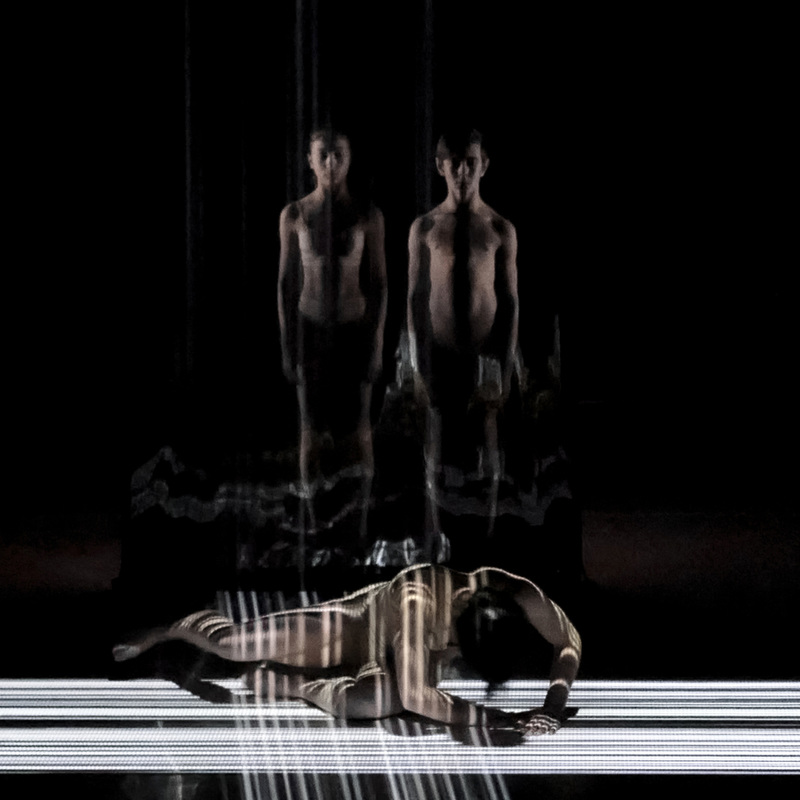
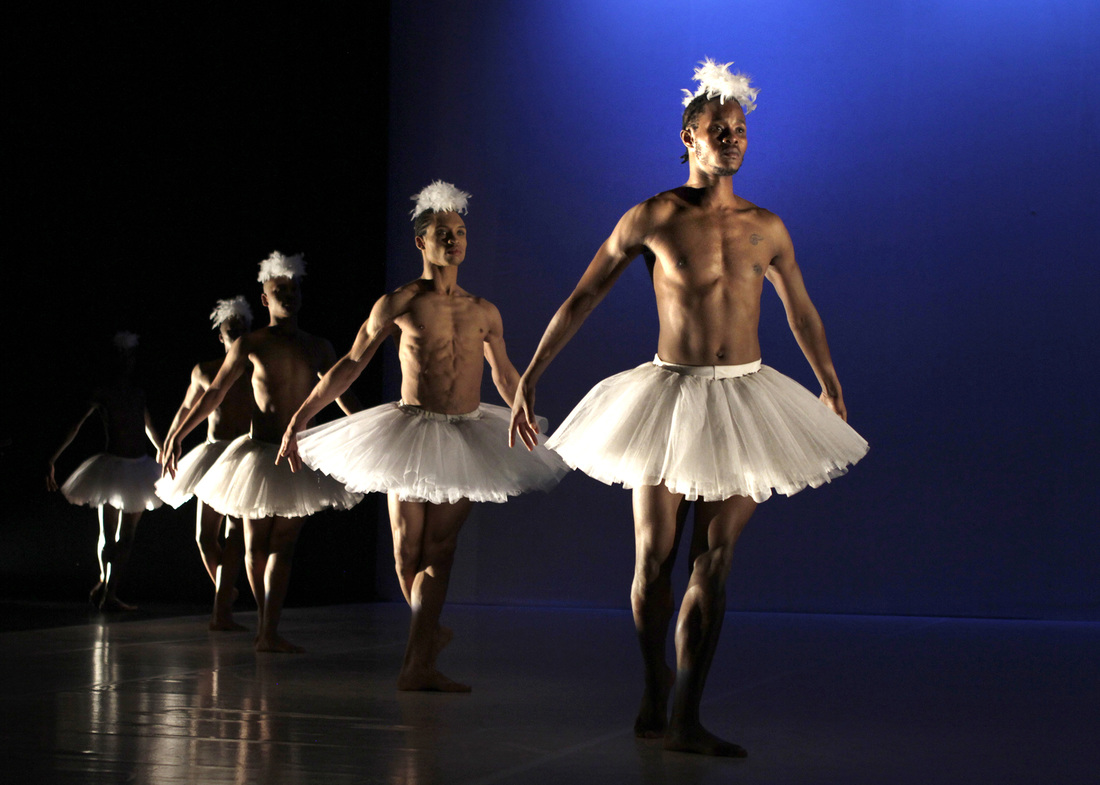
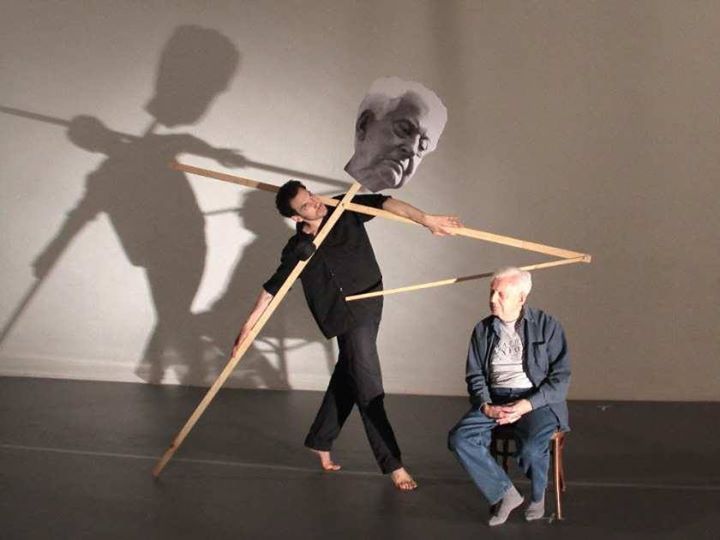
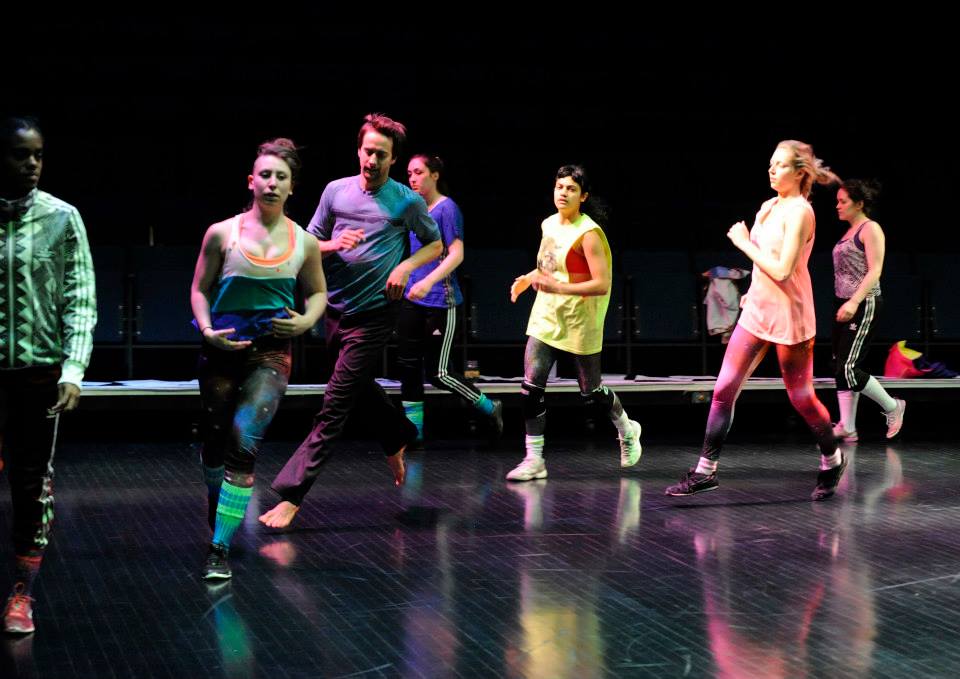
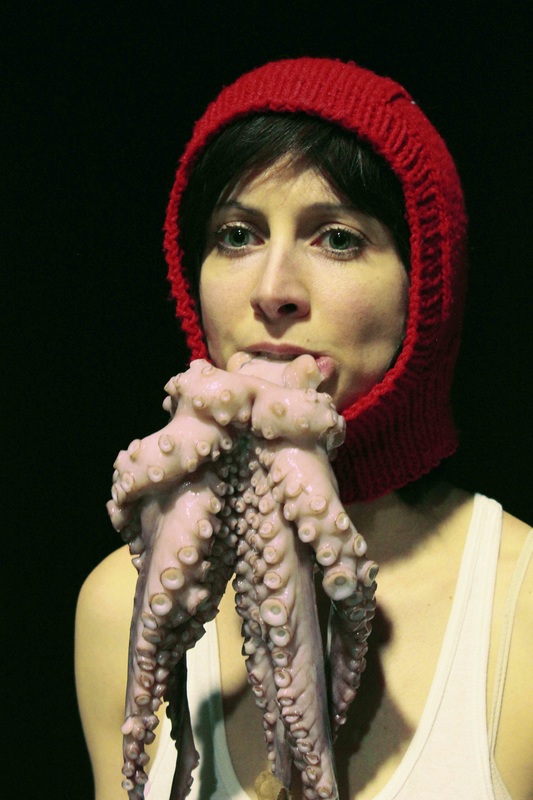

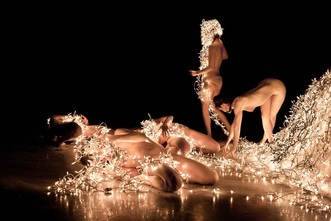
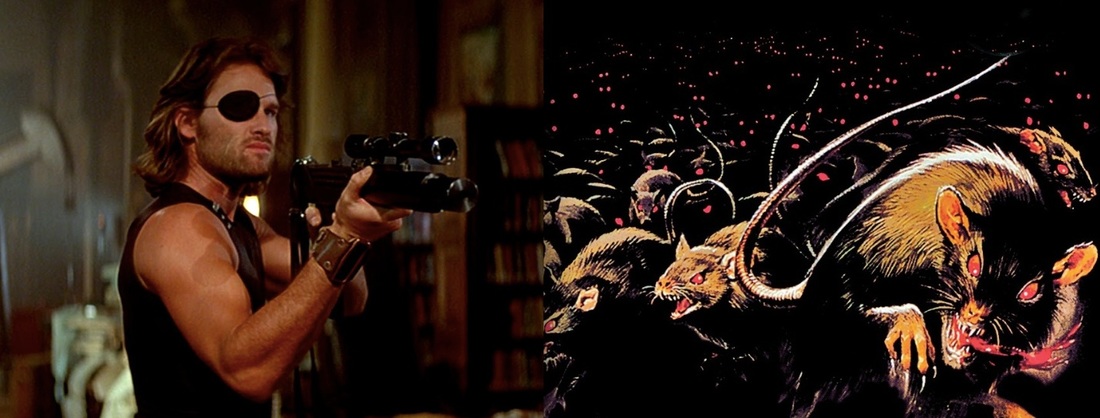
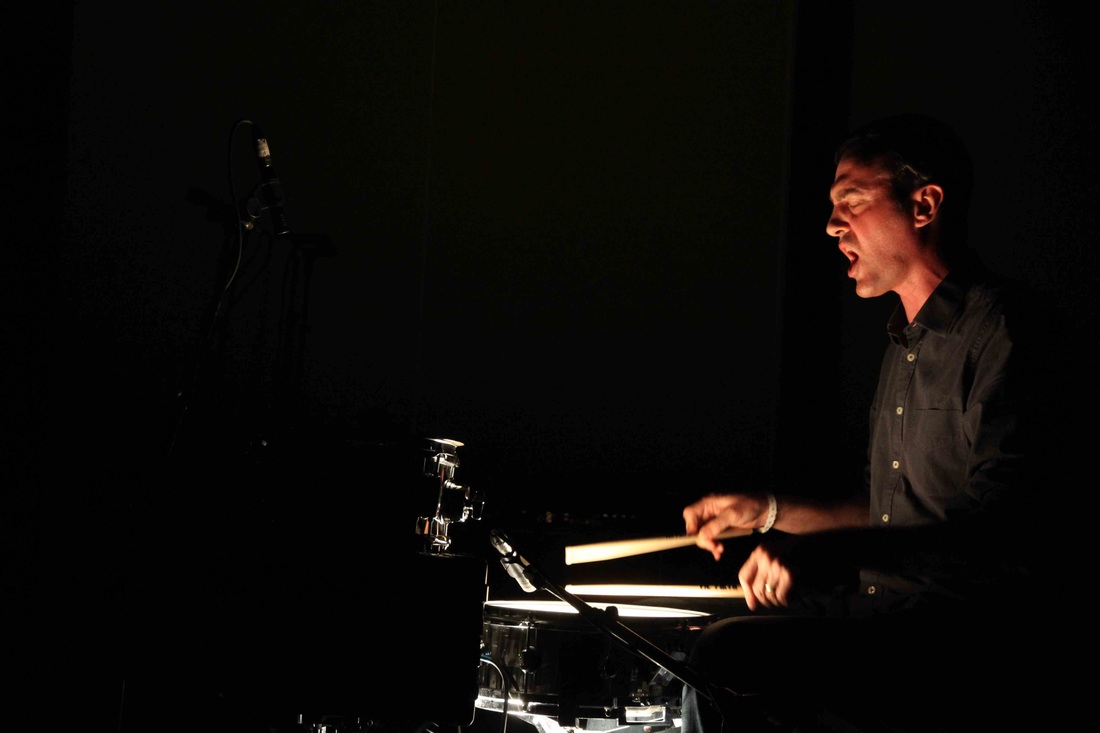
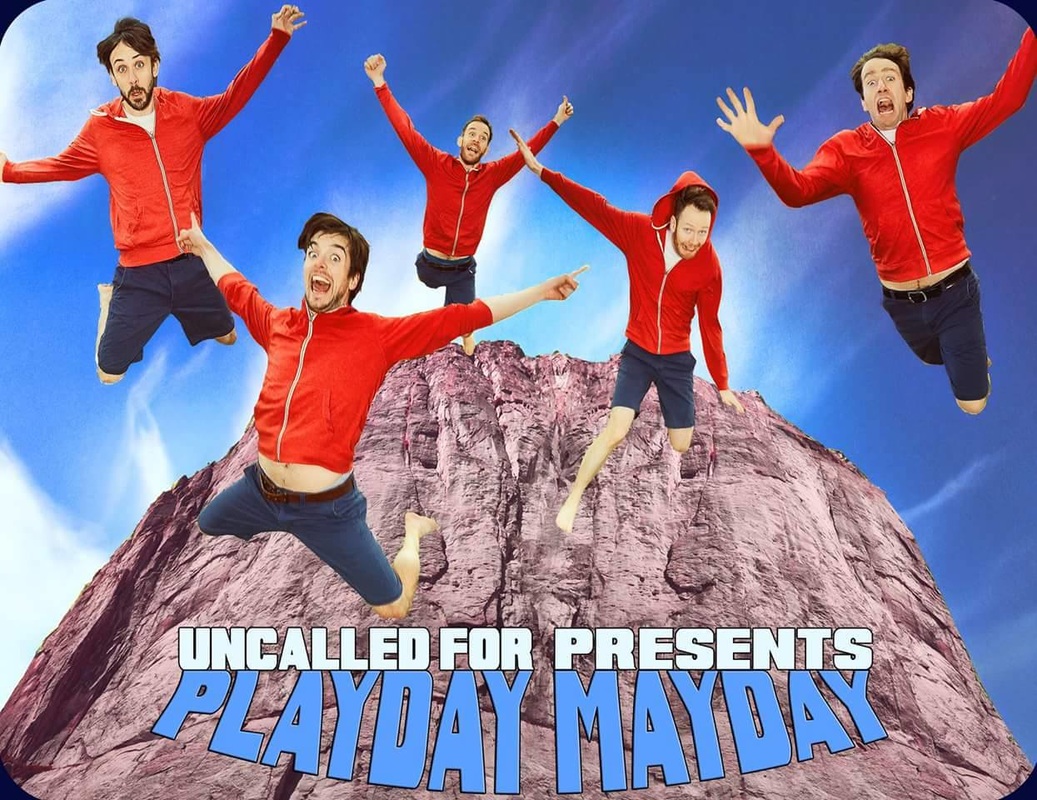
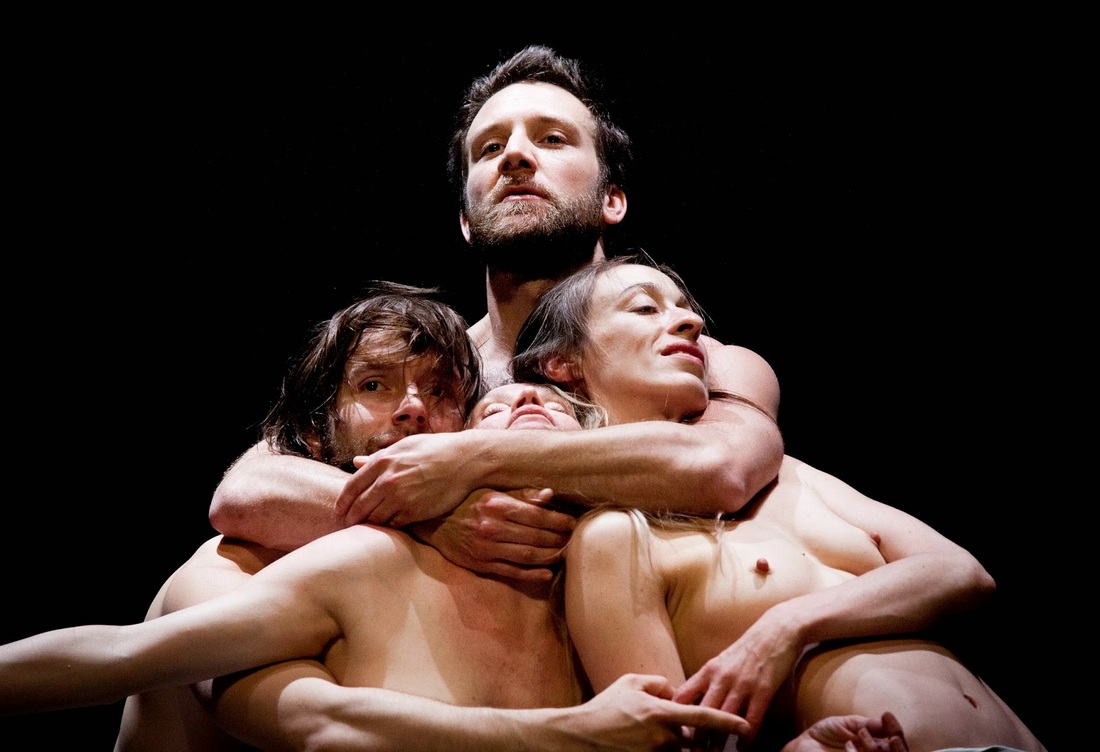
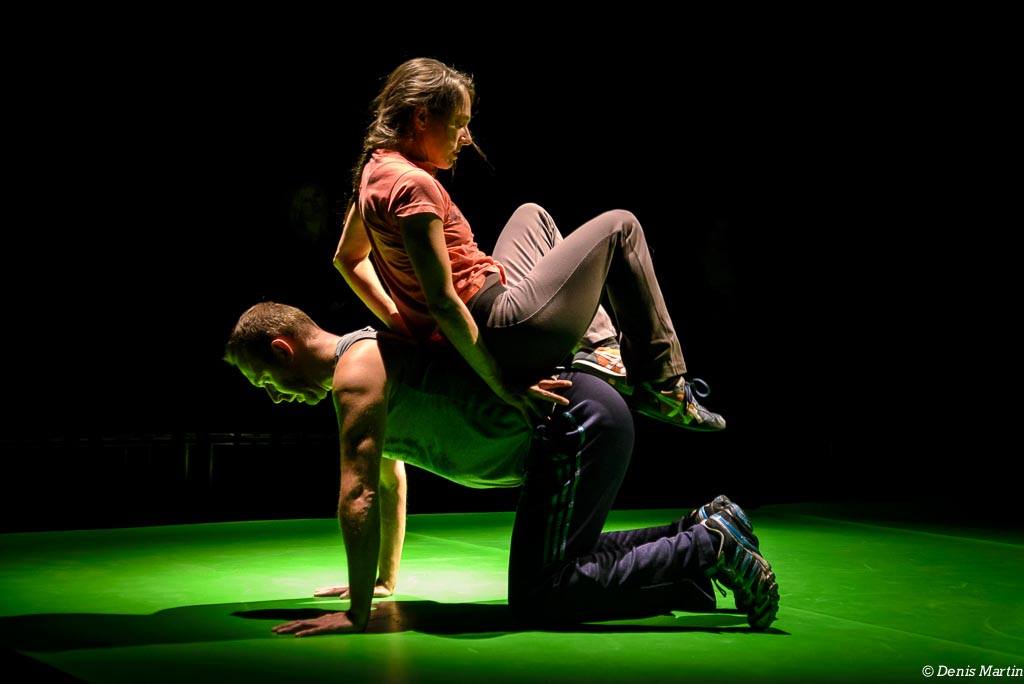

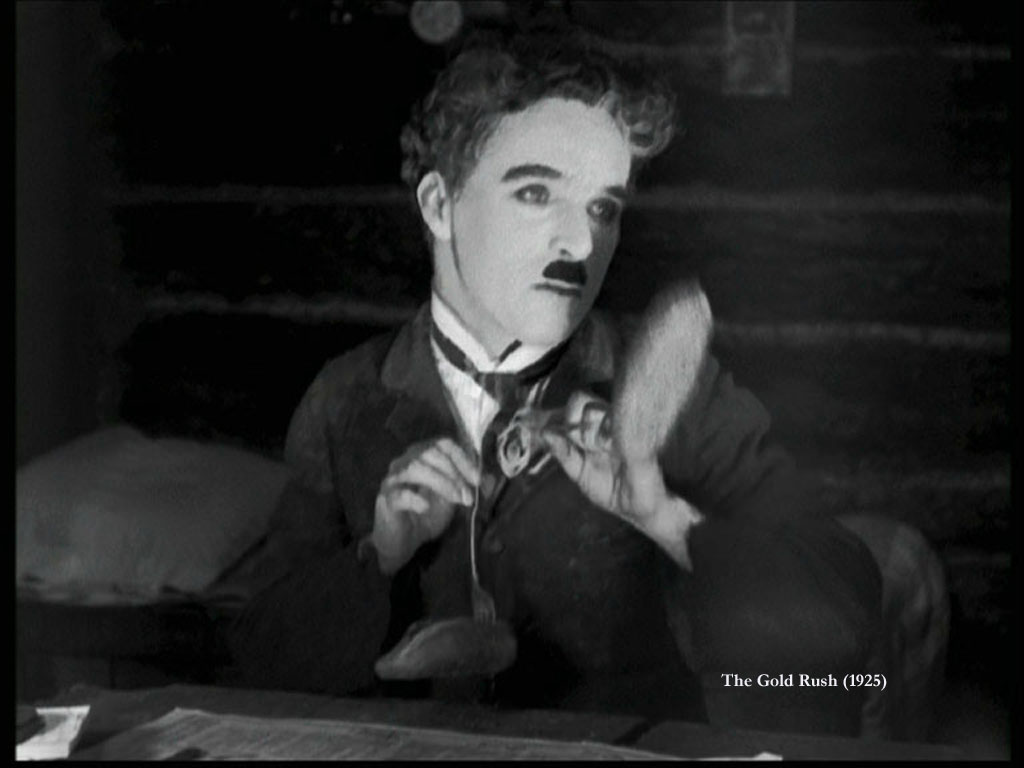
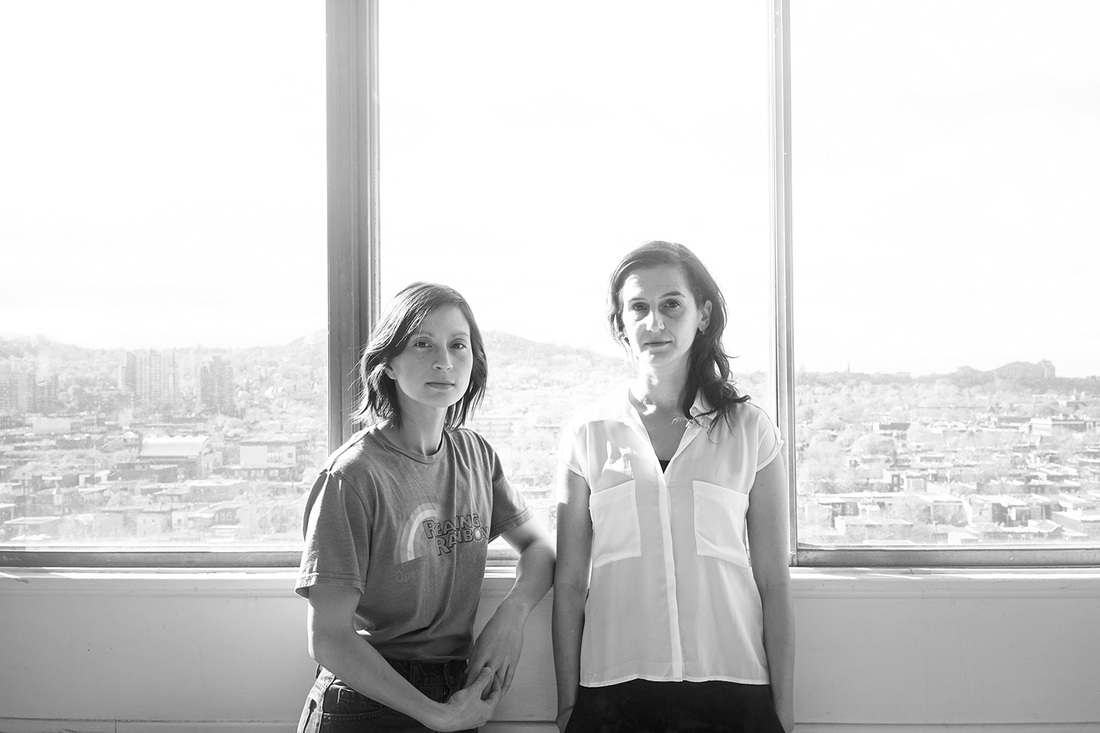
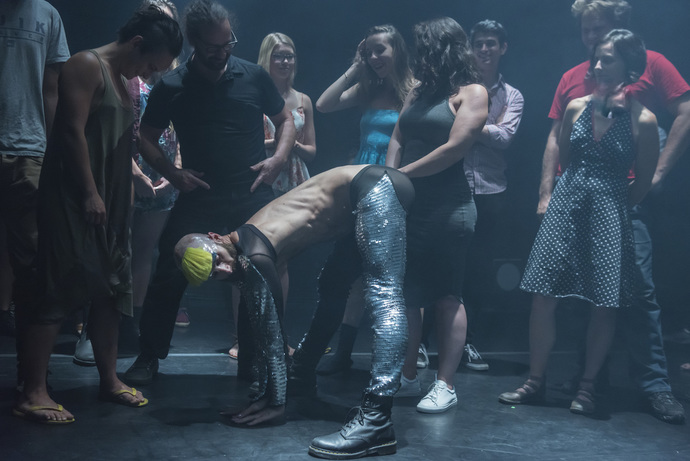
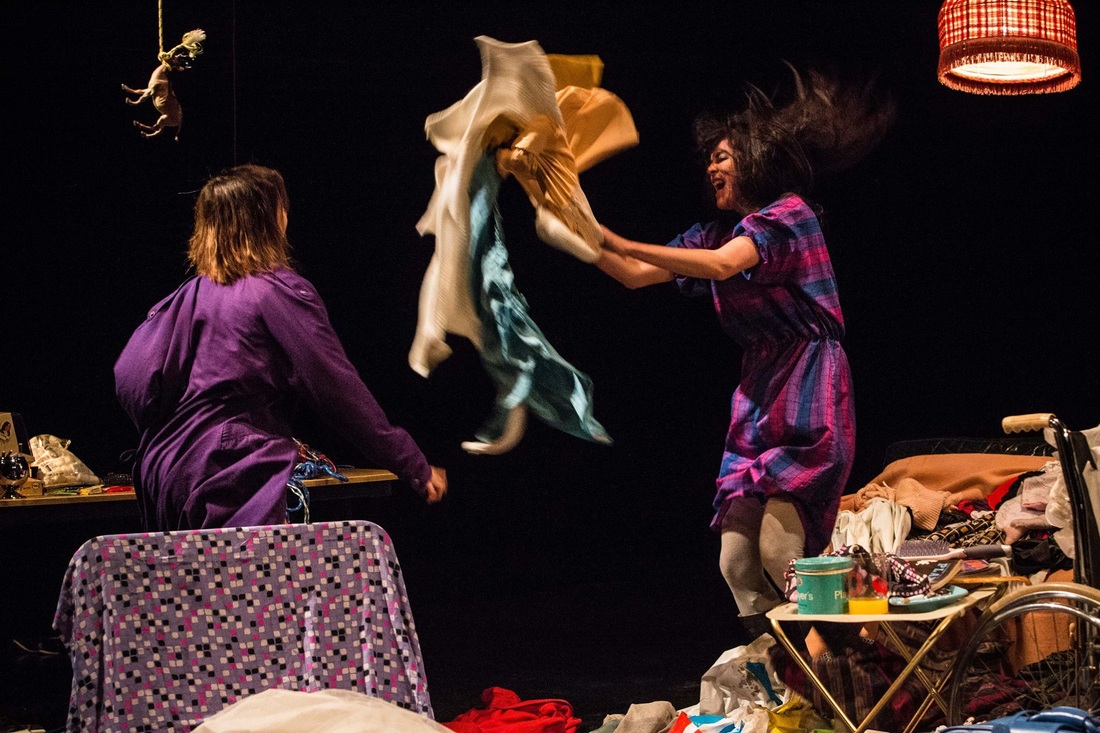
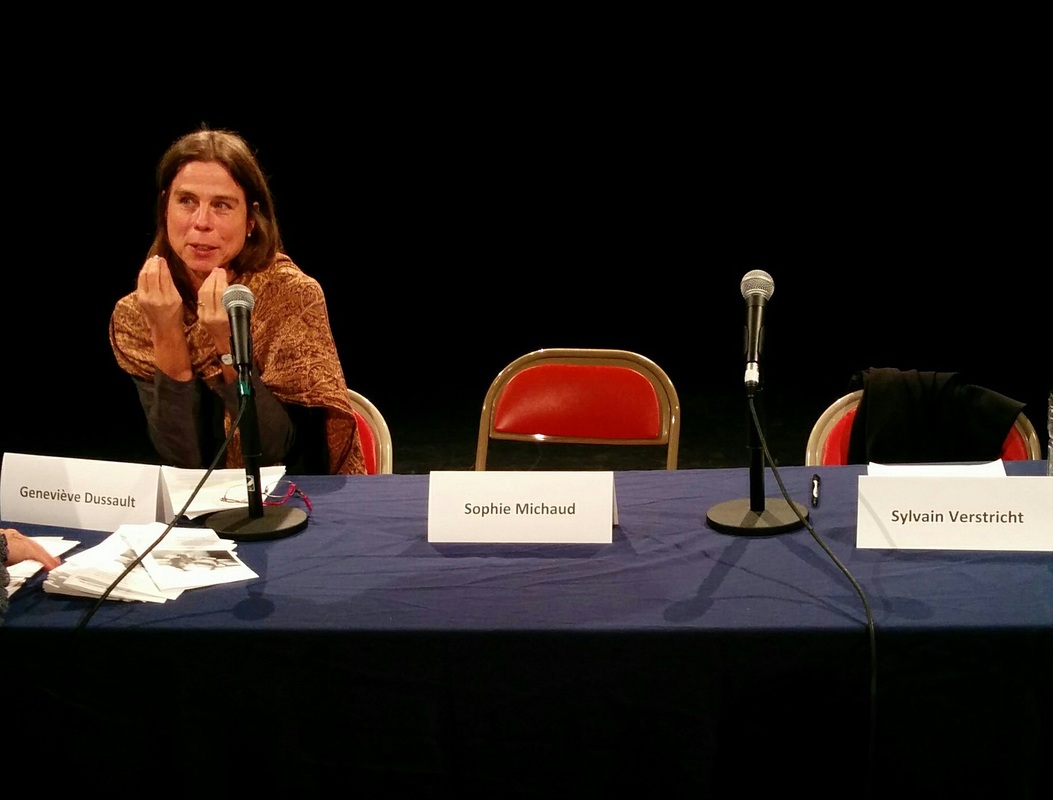
 RSS Feed
RSS Feed